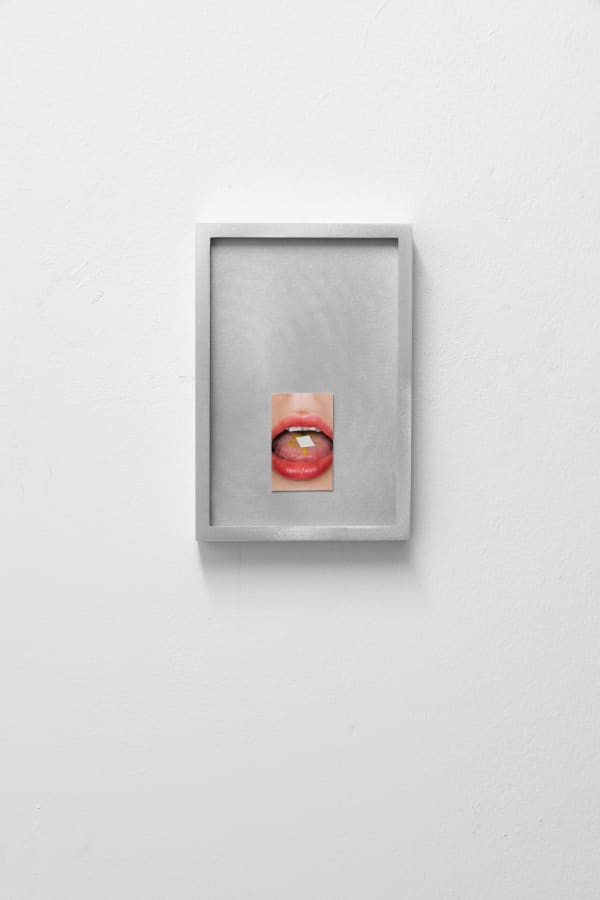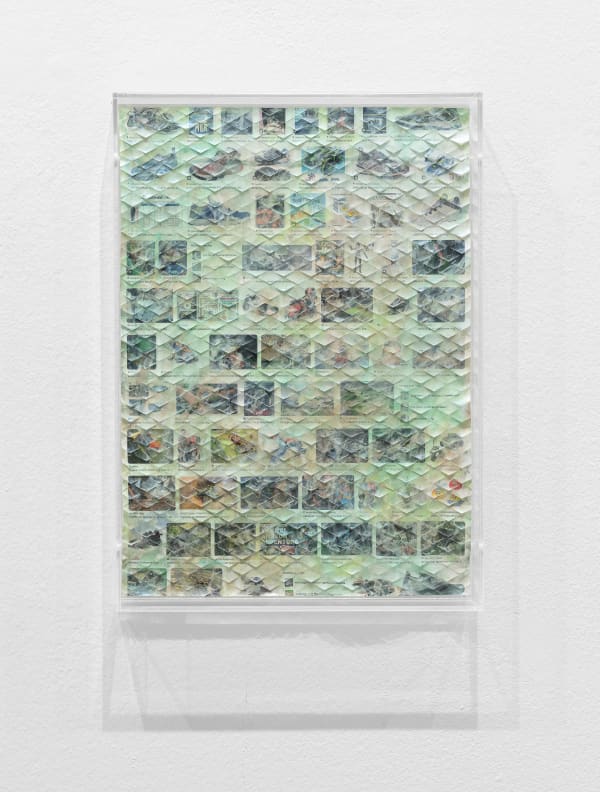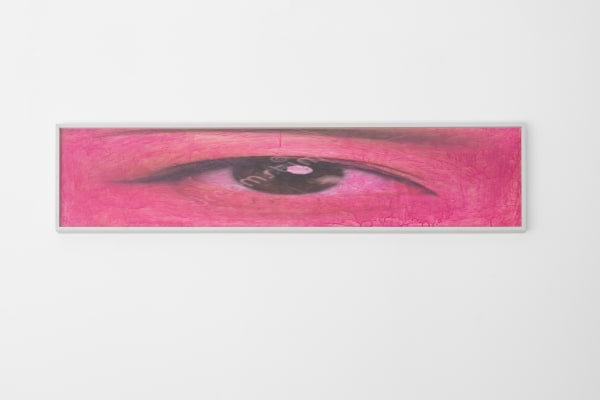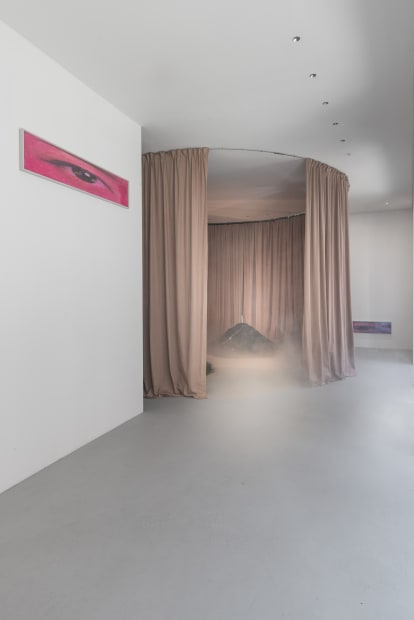
max goelitz is pleased to invite the artists Jenna Sutela and Pamela Rosenkranz in collaboration with gallery Sprüth Magers to present an exhibition that literally brings together humans and more-than-humans. At the core of dirt is the living installation Vermi Cell by Jenna Sutela, a compost composed of soil, seedlings and earthworms, which continues to develop during the exhibition period while generating energy for a sound system. Pamela Rosenkranz's works enter into a dialog with this organism, meditating on the idea of "nature" through the human view of it. Both artists seek to dissolve the boundary between the organic and the synthetic. Furthermore, the exhibition questions the illusion that everything can or should always be readily available to us.
Detailed photos and further information on the individual works can be accessed by clicking on the images.
All Photos: Dirk Tacke | unless otherwise stated
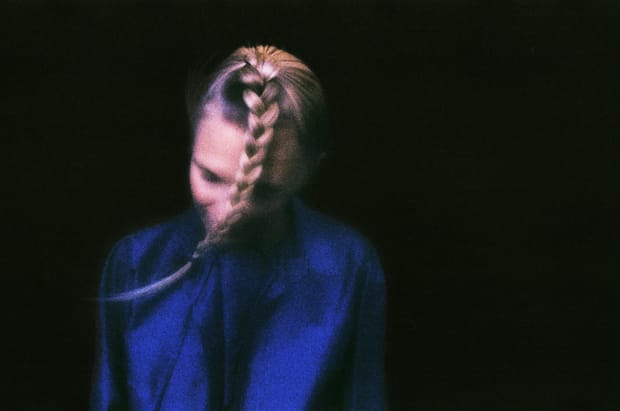
– Jenna Sutela
Photo: Ellie Lizbeth Brown

Jenna Sutela (*1983 in Turku, FI) uses biological and computational systems to create audio-visual works, sculptures, images and performance art. Working with artificial neuronal networks or bacteria and with the help of her own systems and algorithms, the artist uncovers patterns and meanings that are hidden in disorder. With her collaborative approach she points to decentralised organisation, she questions social hierarchy, broaches the issue of communication between species and the connection of awareness and the material world. Her procedural works are based on latest scientific research and reflect its socio-political impact. Sutela’s work promotes the idea of a symbiotic network and the renunciation of an anthropocentric world. Her oeuvre illustrates that humankind does not exist in a void, but in symbiotic ecosystems with bacteria, mould, computers and many other elements, some of which remain incomprehensible.
Installation view Neither A Thing, Nor An Organism, Bold Tendencies (2018) | Photo: Damian Griffiths

Vermi Cell (2023) is an audiovisual installation consisting of compost heaps, within which worms and microbiological organisms generate energy for a sound piece. This energy is derived from electrons in the compost flowing through conductive rods while affecting the intensity of the sound in the space. In Vermi Cell, Sutela creates an environment tailored to the needs of the organisms within the soil, rather than for the viewing audience. In fact, the processes occurring within the compost are not visually discernible but can be perceived through sound, as facilitated by computer processing.
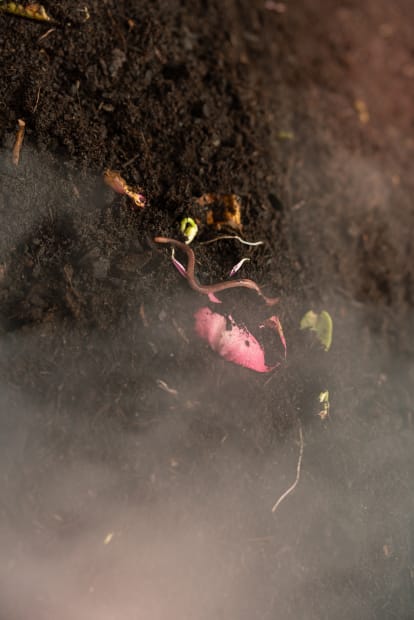
From an eco-materialistic perspective, the work brings to focus to symbiotic ecosystems including bacteria, slime molds, worms, machines, and many other entities that are often not directly observable. Sutela's work demonstrates that humans do not exist in isolation but are part of a reciprocal exchange with their environment. At the intersection of living and computational systems, Sutela finds an expansive world of interspecies relations.
Installation view Vermi Cell, Fragile, Berlin (2023) | Photo: Jonas Wendelin

The photograph Many-Headed Reading (2016) shows a close-up of Jenna Sutela's open mouth and tongue, on which the slime mold "Physarum polycephalum" is spreading. At the center of the image is the single-celled yet "many-headed" organism that is known as a natural computer. In the original performance, Sutela connects with the slime mold by placing it on her tongue and eventually swallowing it, letting its hive-like behaviour "programme" her own. This intimate gesture of ingestion highlights Sutela's interest in transcending traditional boundaries of knowledge and perception. By swallowing the slime mold, Sutela merges human and more-than-human consciousness, hinting at the idea that intelligence exists not only in the brain but throughout the body and beyond, in symbiosis with other life forms and always part and parcel of the wider environment.

– Jenna Sutela
Many-Headed Reading (2017) | Photo: Mikko Gaestel
Many-Headed Reading (2017) | Photo: Mikko Gaestel

Energy Poem (2023) is a piece of writing that Jenna Sutela has printed on edible paper with edible ink, inviting the audience not only to experience it visually and intellectually but also through the body with all its microorganisms. The artist encourages the audience to reflect on the generation, understanding, and sharing of knowledge while prompting them to consider alternative forms of perception and interaction. Sutela's work illustrates that there is an invisible connection between the microscopic and the macroscopic, or cosmic, embodied by organisms such as "Bacillus subtilis", a bacterium which can exist both in the human gut and in outer space.
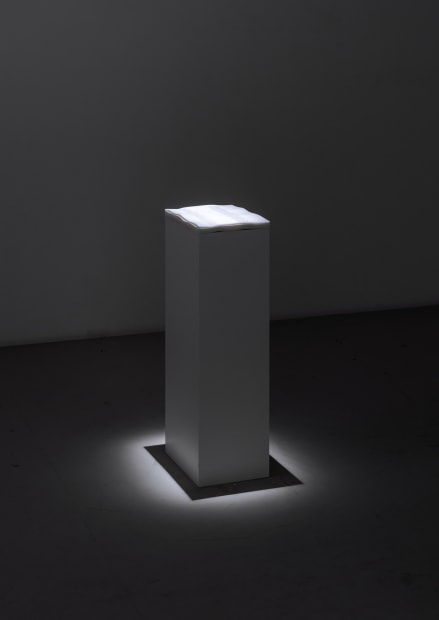
Energy Poem seeks to bring information and energy together, while feeding both the head brain and the gut brain. Sutela’s work at large make it possible to engage with the countless invisible species that live around us and within us. In this particular case, the reception of the poem becomes a symbiotic collaboration literally speaking.
Installation view Liverpool Biennial (2021) | Photo: Rob Battersby

– Pamela Rosenkranz
Photo: Marc Asekhame
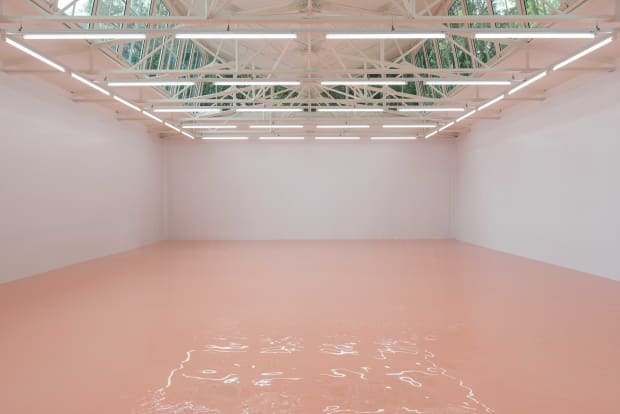
Pamela Rosenkranz (*1979 in Uri, CH) dedicates her artistic practice to the investigation of identity, perception and corporeality in the context of an increasingly technologized world. Her conceptual works, which include sculpture, installation and painting, explore the material foundations of being human and question the supposedly fixed categories of nature and artificiality. Notably, Rosenkranz uses freely available stock images and synthetic materials such as pigments and liquids to refer to the physiological and psychological reactions of the human body and relate these to scientific, cultural and philosophical discourses. In her work, she questions the classical understanding of identity and reflects on how scientific knowledge –especially from neuroscience and evolutionary research– affects our self-image and relationship to the environment. She draws attention to the fact that identity is not a static construct, but a process that is in a constant state of change.
Installation view House of Meme, Kunsthaus Bregenz (2021) | Photo: Markus Tretter

Pamela Rosenkranz's series of works I Wish I Could Cry Blood (2021) places the human eye at the center of perception in order to reflect on viewing patterns and their development. She uses elements from stock photos featuring eyes, positioning them at the center of the narrow frame before overlaying them with pink acrylic paint. The logo of the stock platform runs diagonally and fragmentarily across the image as copy protection, thus revealing its commercial source. This appropriation also addresses the influence of digital image distribution on viewing habits. In connection with the sensory organ, the color pigment dripping down the surface can be associated with bodily fluids.

This creates an ambivalence between the symbolic meaning of the eye as knowledge and the actual physical perception that takes place multisensory in the body and in which numerous biochemical processes are subconsciously involved. Rosenkranz emphasizes the permeation of the external and internal, the depicted and the physical. She questions traditional gaze regimes and the eye as the primary organ for gaining knowledge by emphasizing the fluid and hidden components of the body.
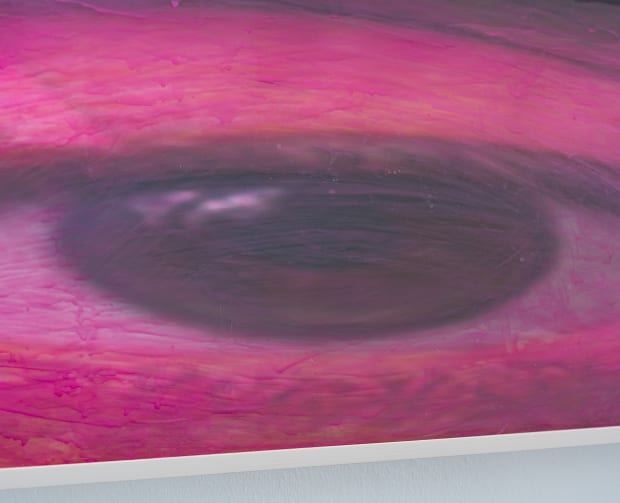
– Pamela Rosenkranz
Installation view House of Meme, Kunsthaus Bregenz (2021) | Photo: Markus Tretter
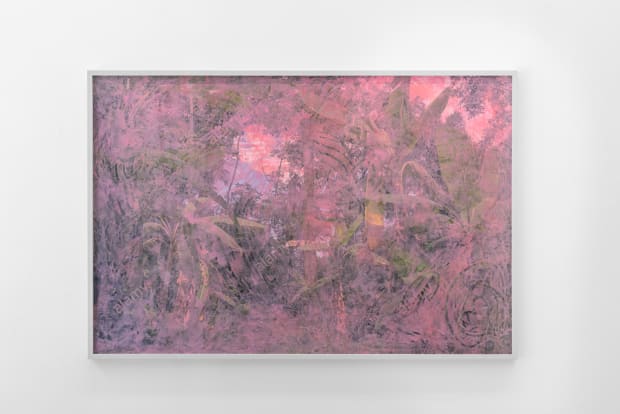
The series Anamazon (2021) highlights the interplay between the perception of natural landscapes and digital image production. Using stock photos from the platform Alamy, specifically depicting rainforest landscapes, she transfers them onto aluminum as pigment prints. Through these works, Rosenkranz explores the manipulation of visual material, questioning how images are processed and consumed in the digital realm.
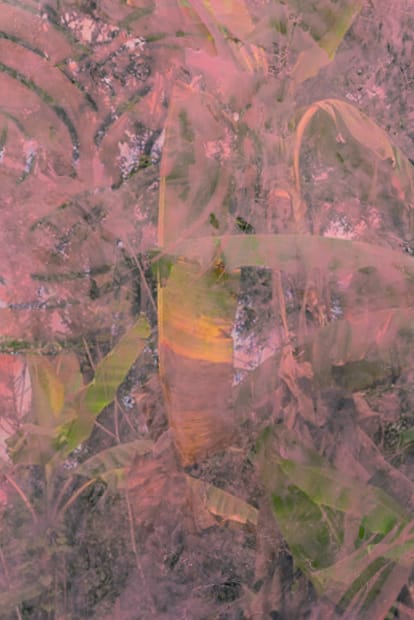
She emphasizes the gap between untouched nature and its commercial exploitation through digital media. By overlaying these universally accessible, standardized archive images of the rainforest with bold layers of pink acrylic paint, she evokes associations with the human body and its fluids, intentionally blurring the boundaries between the natural and the artificial. The series engages with the broader theme of humanity's increasing estrangement from nature while also examining the role technology plays in mediating and commodifying images of nature. Rosenkranz uses this juxtaposition as a method to transform traditional materials and motifs, reinterpreting them in a contemporary context that reflects the tensions and paradoxes of modern society.
– Pamela Rosenkranz
Video: Humans Are Mammals, Louisiana Channel (2022)
Installation view House of Meme, Kunsthaus Bregenz (2021) | Photo: Markus Tretter
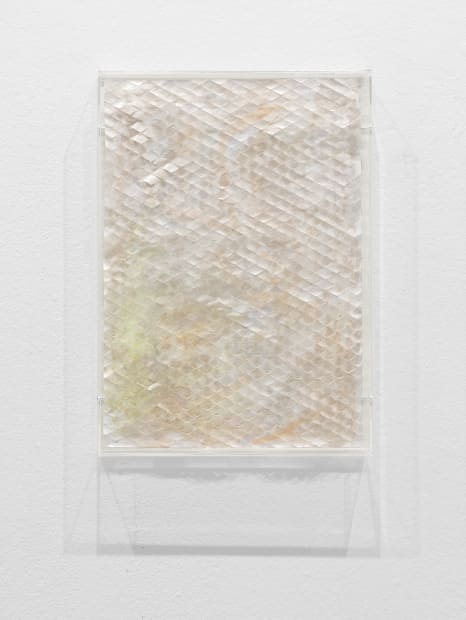
The series Healer Scrolls (2023/2024) reflects the intersection of nature and technology, as Pamela Rosenkranz makes precise cuts in the paper to create patterns reminiscent of snake scales. The workseries consist of printed and non-printed in Kirigami style cut paper, overpainted with watercolor and framed in plexiglass. Rosenkranz explores the symbolism of the snake, which has evolved over time through deep-rooted cultural traditions, and transfers its archetypal imagery onto paper. Known for its dual nature, the snake is a symbol of the fine line between life and death. With its venom, serving both as a potent remedy and a deadly weapon, it is connected to ancient shamanic beliefs while simultaneously evoking deeply ingrained evolutionary fears.

Inspired by this layer of meaning, as well as the evolutionary shift from aquatic to terrestrial life, Healer Scrolls points to the transition of new forms of existence. The fluid swimming motions evolved into the slithering movement of land animals, enabled by the scaly body. In this way, the series references the evolution of living organisms while simultaneously marking a point of technological development, situated between historical craftsmanship and machine production. The paper works appear both constructed and fragile, questioning our relationship to the natural and artificial world through the imitation of organic material using mechanical precision. Additionally, the title suggests the development of digital information transmission, which is consumed through scrolling on the internet, paralleling the act of reading ancient scrolls.
Installation view Healer, Sprüth Magers, London (2021) | Photo: Benjamin Westoby


